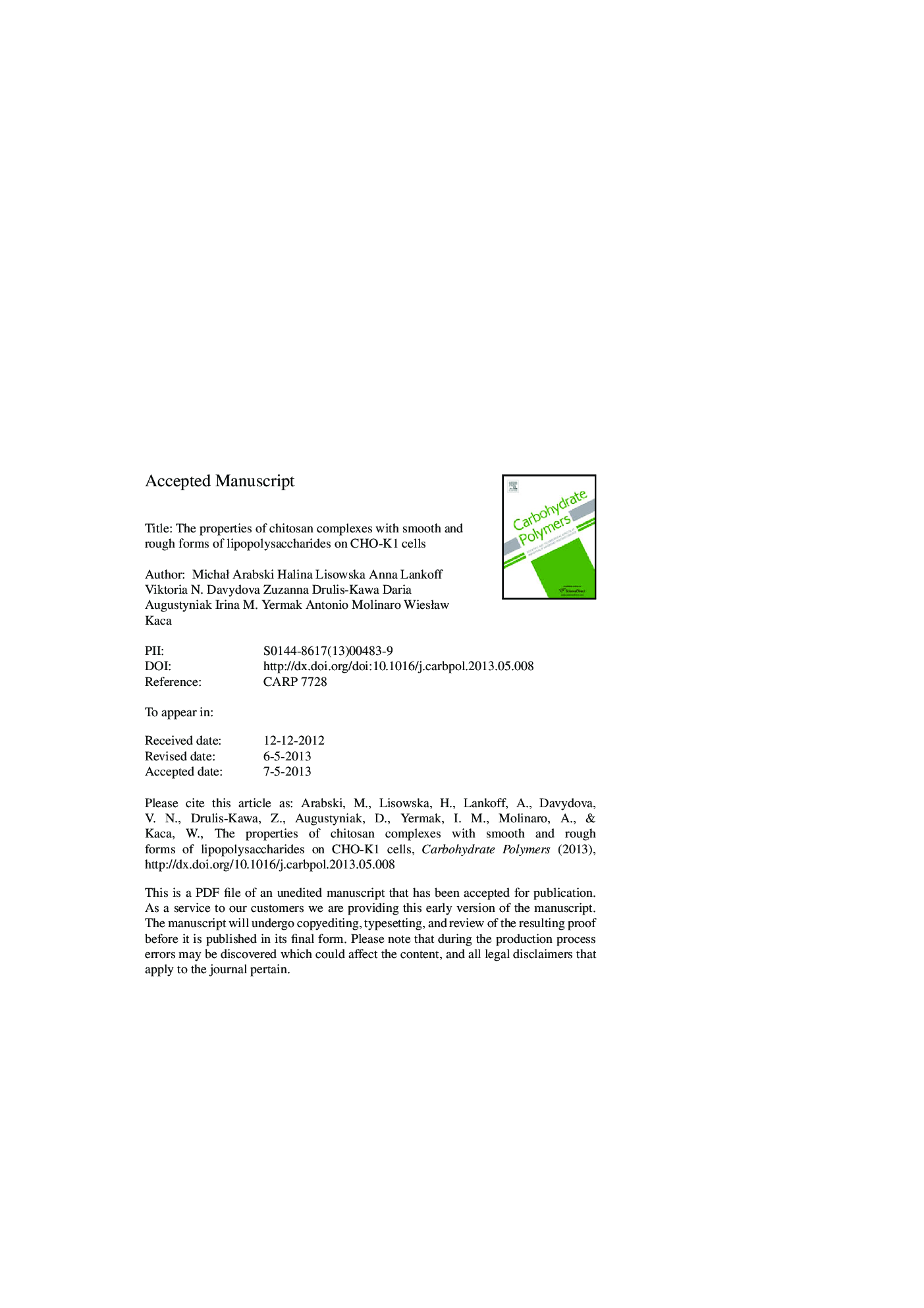| Article ID | Journal | Published Year | Pages | File Type |
|---|---|---|---|---|
| 10597028 | Carbohydrate Polymers | 2013 | 33 Pages |
Abstract
The negative charge of LPS molecule and the presence of fatty acids in lipid A structure make it capable of binding with chitosan. In the presented work we analyzed the interactions of chitosan with LPS of Burkholderia cepacia or Proteus mirabilis and biological effects of these complexes on CHO-K1 cells. We observed that the presence of O-polysaccharide part of LPS (S1959), core region (R110) or lack of fatty acids in lipid A increased binding affinity of endotoxin with chitosan. However, lipid A of B. cepacia or P. mirabilis R45 might interact with CHO-K1 cells membrane alone or mediated by chitosan, respectively. In conclusion, the presence of two (B. cepacia) or one (P. mirabilis R45) Ara4N residues in lipid A part, promoted binding to cell membrane of CHO-K1 cells, alone or in the presence of chitosan, respectively. Chitosan reduced biological potencies of P. mirabilis lipid A R45 structure and this effect depended on the presence of O-PS. Lipid A of B. cepacia induced oxidative DNA damage in CHO-K1 cells.
Related Topics
Physical Sciences and Engineering
Chemistry
Organic Chemistry
Authors
MichaÅ Arabski, Halina Lisowska, Anna Lankoff, Viktoria N. Davydova, Zuzanna Drulis-Kawa, Daria Augustyniak, Irina M. Yermak, Antonio Molinaro, WiesÅaw Kaca,
